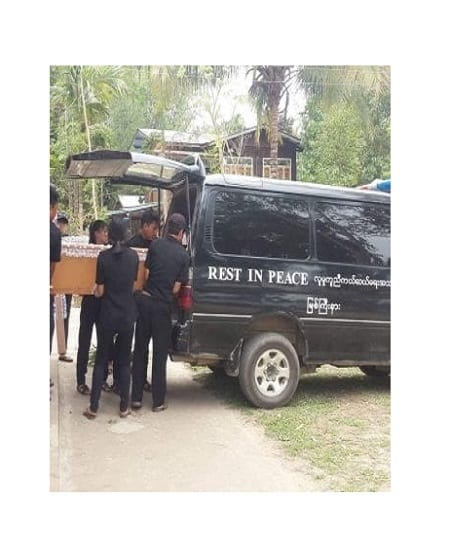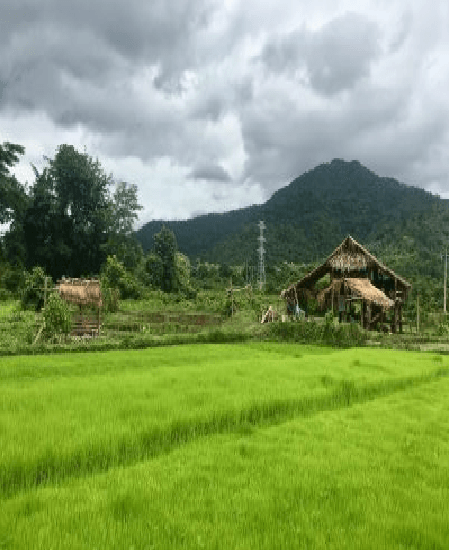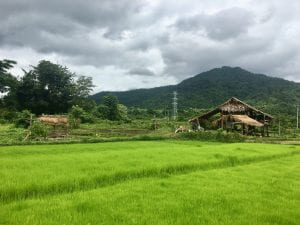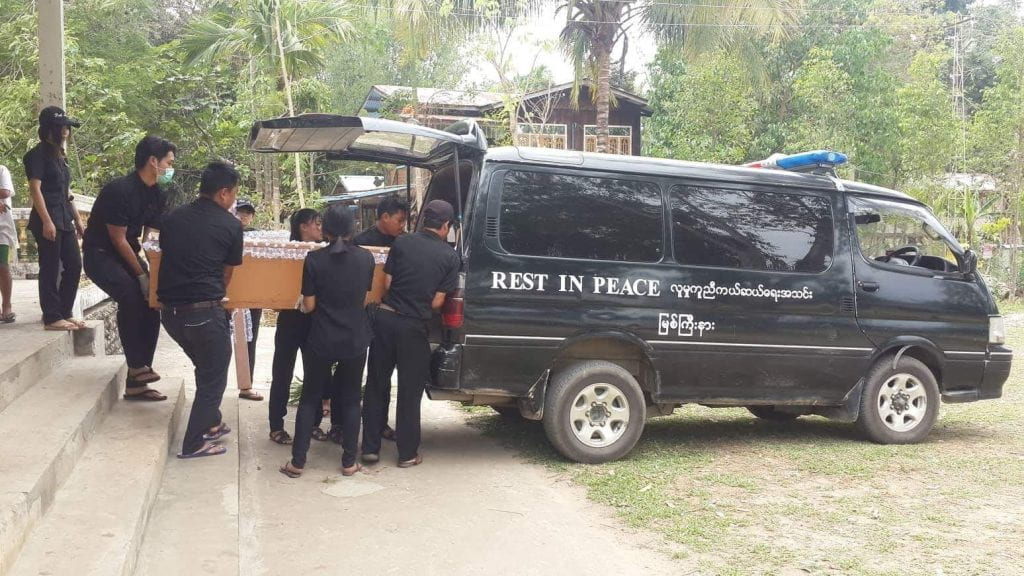
Myanmar Rescue – Kachin, locally known as Rest in Peace Myitkyina (RPM), is a Myitkyina-based rescue team in Kachin State, the northernmost state in Myanmar. It was first founded in 2012 and since then have become an integral part of the local communities across Kachin State.
When the group was first established, its initial aim was to provide free funeral transportation in the Myitkyina area. This of course is a much-needed service in all localities across Myanmar. The vast majority of the people of Myanmar cannot afford to own a vehicle of any kind. In fact, according a recent survey conducted by the USAID in partnership with the Myanmar Ministry of Health and Sports, only 5% owns a car or truck. Therefore, transporting caskets to cemetery, let alone the funeral attendees, can be a daunting task. There were church-based funeral transportation services in Myitkyina, but they typically “suggest” a donation of 60,000 kyats (about $45), which was not affordable for many families. There were also Buddhist-monastery-based funeral transportation services which were free, but religious-community-based service provisions rarely ever cut across religious line in reality even though they are not meant to be so. This is why the founder of RPM, who is an ethnic Kachin and a Baptist, had a difficult time finding an affordable funeral transportation service when his father passed away. The challenges, both emotional and physical, inspired him to start a community-based free funeral transportation service that is detached from religious affiliation. The group began with just 8 individuals who were all close friends of the founder. Today, there are more than 50 volunteers (all unpaid) ranging from teenagers as young as 13 to 65-year-olds.
Since founding the group’s activities have expanded to include ambulatory service, transportation of dying persons (and sometimes already deceased) from the hospital to their homes, and anything rescue related. For example, when two local boys drowned in the Irrawaddy River, but the bodies had not turned up, the RPM was contacted to search for the bodies. The geographic converge of the service has also necessarily expanded to regions outside of Myitkyina. That is because other localities in Kachin State lack free and reliable rescue services, and also because given that Myitkyina is the capital city of Kachin State, its general hospital, perhaps the most comprehensive and advanced hospital in the state, receives patients from all over the state. Sometimes a family in Danai, about 80 miles northwest of Myitkyina, would contact RPM to transport their loved one to the Myitkyina hospital. Sometimes, the hospital staff would call RPM to transport dying patients to Hpakant (70 miles from Myitkyina), Waingmaw (across the Irrawaddy river from Myitkyina), and Chipwi (close to the Chinse border). Because RPM responds to emergency situations, it is always ready to go regardless of the time of day (the night I talked to the group, they brought a cordless landline phone with them and warned me that they might have to interrupt our conversation and get going should the phone ring), and teams of volunteer rotate for night duty.
Such geographic expansion comes with more interaction with the authorities at check-points (there seem to be a check-point before entering any township in the state). Some check-points cannot be passed between 6pm and 6am. An RPM volunteer recalled a time when they were transporting a deceased person from the general hospital to Waingmaw around mid-night and had to wait at the check-point until 4am to be allowed to pass.
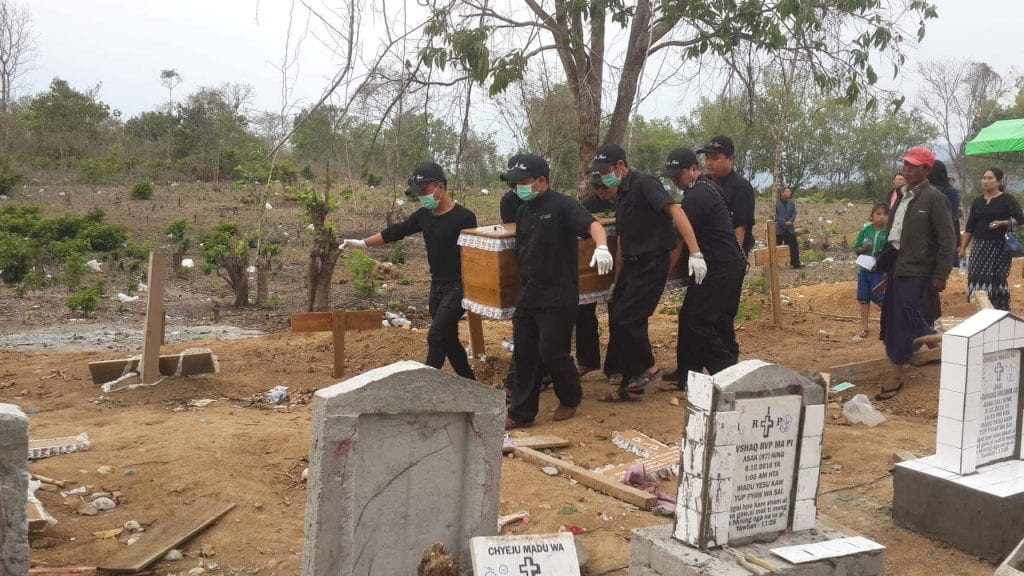
RPM is just one of many incredible local initiatives that grew into much needed public goods. The government in Myanmar is simultaneously big and small. It is big in a sense that its public administration span from the union government (akin to the federal government in the U.S.) all the way down to all ward and village tracts, which is the lowest level of administration unit, across Myanmar, including the border area. Its hierarchical and expansive nature allows the government to extend its presence to every corner of Myanmar (except in the rebel control areas), yet it is unable to adequately provide its citizens’ basic needs such as street lights, drains, road construction and repair, emergency service, etc. (and we haven’t even started talking about the state of government-provided welfare in Myanmar). And it is not clear when it will be able to step up to provide these basic needs. Right now, in many localities across Myanmar, it is the ordinary citizens who are taking charge to come together to dig drains and wells and even provide 24-hour emergency service.
 Jangai Jap, Ph.D. Political Science 2021
Jangai Jap, Ph.D. Political Science 2021
Sigur Center 2018 Field Research Fellow
Myanmar
Jangai Jap is a Ph.D. Candidate in George Washington University’s Political Science Department. Her research interest includes ethnic politics, national identity, local government and Myanmar politics. Her dissertation aims to explain factors that shape ethnic minorities’ attachment to the state and why has the state been more successful in winning over a sense of attachment from members of some ethnic minority groups than other ethnic minority groups. She has won the National Science Foundation Graduate Research Fellowship, and her dissertation research has received support from the Cosmos Club Foundation and GW’s Sigur Center for Asian Studies.
